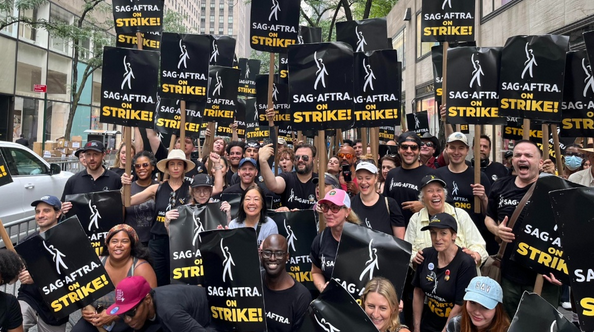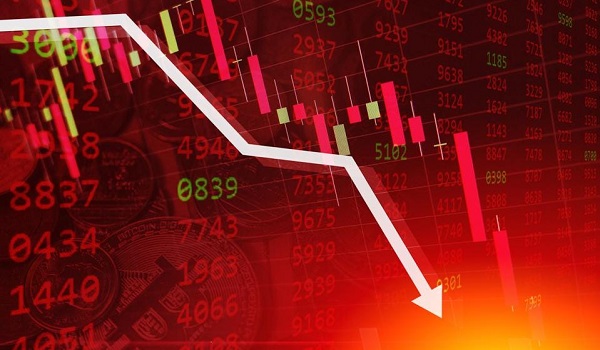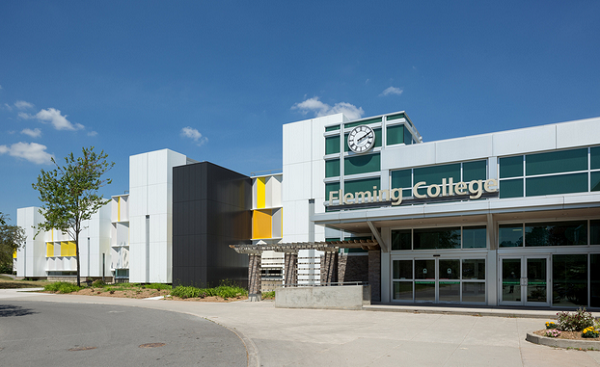Canadian film and TV workers planning to return to work after months of Hollywood strike
After more than four months without work due to a historic Hollywood actors’ strike, Canadian performer Kristian Bruun says it was a “euphoric relief” to learn he’ll return to the Vancouver set of his Netflix series in the new year.
The Toronto-born actor says the cast and crew of “The Recruit,” starring Noah Centineo, are slated to begin shooting the spy thriller’s second season on Jan. 4. It was originally set to go to camera in late June but was halted by the strike.
While a timeline to return to work offers some solace to the Los Angeles-based Bruun, it could take months before his paycheques start rolling in, and even longer before he gets health insurance again.
“I’ll still be living off my savings,” says Bruun. “It’s not as simple as, we just turn everything back on and we’re back to normal. It’s going to be a months-long process.”
Like many U.S.-based television series and movies that shoot in Canada, the show’s production plans were upended when the Screen Actors Guild-American Federation of Television and Radio Artistshit the picket lines in mid-July, joining thealready striking Writers Guild of America.
The dual strikes effectively brought the entertainment industry to a standstill, and devastated many of the tens of thousands of Canadian crews and talent who depend on American productions for work.
The actors’ strike ended Nov. 9 after SAG-AFTRA struck a tentative deal with the Alliance of Motion Picture and Television Producers, which represents streamers and studios including Disney, Netflix and Amazon. The union’s board members voted to approve the deal a few days later, touting gains on major sticking points in earlier negotiations, like increases to minimum pay and protections over the use of artificial intelligence.
The three-year contract is now subject to a ratification vote from the union’s membership with a Dec. 5 deadline. And with the WGA having ratified its own deal with studios in October, signs of life are beginning to show in the Canadian production industry known as Hollywood North.
While someshoots like Bruun’s that were camera-ready when the strike hit are already gearing up to resume filming after the winter holiday shutdown, industry observers anticipate it could take months before production returns to full capacity, as producers wait to hear how the terms of SAG-AFTRA’s deal will affect future projects.
Vancouver film commissioner Geoff Teoli says there’s been an uptick in pre-production scouting and scheduling since the actors’ strike ended, and promised some filming around town by the end of the year. But he doesn’t expect a full recovery for the production hub until spring 2024, after seeing a 75 to 80 per cent drop in the city’s usual activity for the year.
Teoli says he’s heard from producers that there is an immediate need for “on time and on budget” projects since “time is short and money is tight” following the strikes.
The labour dispute’s resolution is cause for celebration for Toronto talent agent Karin Martin, and especially for many of her clients in production who haven’t worked in nearly a year since U.S. studios anticipated job action last winter and scaled back orders. But she warns that Canadian workers could be returning to a transformed industry.
“We’ve had monumental shifts in our industry in the past, obviously one was when we went from film to digital, and this is another big one,” she says. “This is going to be huge for the industry. It’s going to reduce it tremendously.”
Despite the dual strikes, legacy studios and steamers still turned a short-term profit by collecting revenue from streaming services and ready-to-go content, without production expenses going out, Martin says. She predicts that formula of lower financial output will likely continue in the post-strike era, leading to reduced slates for studios and streamers.
“I don’t think throwing money at anything is going to happen as much as it used to. It’s going to be very focused on how every penny is going to be spent, whereas before it was a little more fluid,” she says.
“Between creative and finance, I think the compromise is going to go a little more toward the bottom line versus the artistry of it.”
Some production workers are already adapting to new realities after widespread hardship brought on by the strike.
Scenery constructor Perry Frigault, whose Toronto-based company Topshelf Industries Inc., serves TV and film sets in southern Ontario, was forced to break the lease on his business’s brick-and-mortar location after 17 years. Now he’s in the process of moving all his equipment and tools into a 53-foot trailer that will travel from location to location, and set up productions as needed.
“There’s been a ton of hardship. People have lost their homes, people are out on the street,” said Frigault.
Ian Drummond, whose Toronto company the Ian Drummond Collection Inc., rents 20th century vintage clothing to film and TV shoots, says he’ll remain in savings mode since he doesn’t envision a return like the boom seen coming out of the COVID-19 pandemic. He also worries a production slowdown will move the focus from high-budget, limited series to longer, procedural shows.
“They want the new ’Friends,’ the new ’Cheers,’ the new ’Frasier’ – things that have longevity. They might not be as interested in telling an eight-party story,” he said.
“It’s going to be a changed world. We’re just going to have to adapt to it and plan accordingly.”
Bruun, the actor, says he’s unfazed by any potential budget changes, script revisions or adjustments coming to the Vancouver set of “The Recruit.” He’ll be busy packing his bags, doing wardrobe fittings and memorizing his lines.
“I’m just happy we can all get back to doing what we love to do.”
This article was first reported by The Canadian Press















